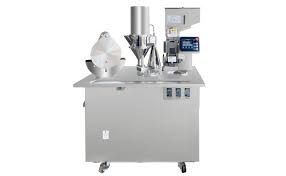Identify Your Production Requirements
The first step in selecting a tablet press machine is to assess your specific production needs. Consider the volume of tablets you plan to produce. Tablet press machines range from small, manual presses capable of producing a few hundred tablets per hour to large, high-speed rotary presses that can produce hundreds of thousands to millions of tablets per day. For instance, a small-scale laboratory might only need a machine with a capacity of up to 5,000 tablets per hour, whereas a large pharmaceutical company might require a system that churns out 300,000 tablets per hour.
Choose the Right Type of Machine
Tablet press machines come in two main types: single-punch and rotary. Single-punch presses are simpler, cost-effective, and ideal for smaller batches or R&D work. They operate with one die and punch, making them easy to set up and maintain. In contrast, rotary presses are designed for high-volume production, featuring multiple punches and dies that rotate to produce tablets at much higher speeds.
Consider the Tooling Specification
Tooling is critical as it determines the size, shape, and imprint of the tablets. Standard tooling types include B and D for rotary presses, with D capable of handling larger tablet sizes. It’s vital to ensure that the machine you select can accommodate the tooling specifications required for your tablet designs, particularly if you intend to produce multiple types with varying complexities.
Assess Operational Flexibility
Look for a tablet press machine for sale that offers operational flexibility if you need to switch production lines or adjust tablet specifications frequently. Some advanced machines offer features like pre-compression and main compression, which help in adjusting tablet density and hardness. These features are particularly important when working with different formulations that may require specific handling to meet quality standards.

Evaluate Ease of Maintenance and Cleaning
Ease of maintenance and cleaning is crucial in the pharmaceutical industry to comply with health and safety standards. Choose a tablet press machine that offers easy access to its parts and is designed with cleaning in mind. Quick release features for dismantling and reassembling parts can significantly cut down on downtime and ensure that you maintain a sterile production environment.
Check for Safety Features
Safety should never be compromised. Ensure the tablet press machine comes equipped with safety guards, emergency stops, and other protective features to safeguard operators. Advanced safety features not only comply with regulatory requirements but also prevent accidents and enhance the overall reliability of the machine.
Consider the Supplier's Reputation and Support
Finally, the reliability of the supplier is as important as the machine itself. Select a supplier known for quality craftsmanship and excellent customer support. Comprehensive training, responsive service, and available parts are all essential components of good supplier support, ensuring your machine operates efficiently over its lifespan.
Final Thoughts
Choosing the right tablet press machine requires careful consideration of your production needs, machine type, tooling, operational flexibility, ease of maintenance, safety features, and the reliability of the supplier. A well-chosen machine will not only enhance your production efficiency but also ensure you produce high-quality tablets that meet industry standards. As technology in tablet manufacturing continues to evolve, staying informed and selecting equipment that aligns with your current and future needs is key to success in the competitive pharmaceutical landscape.
